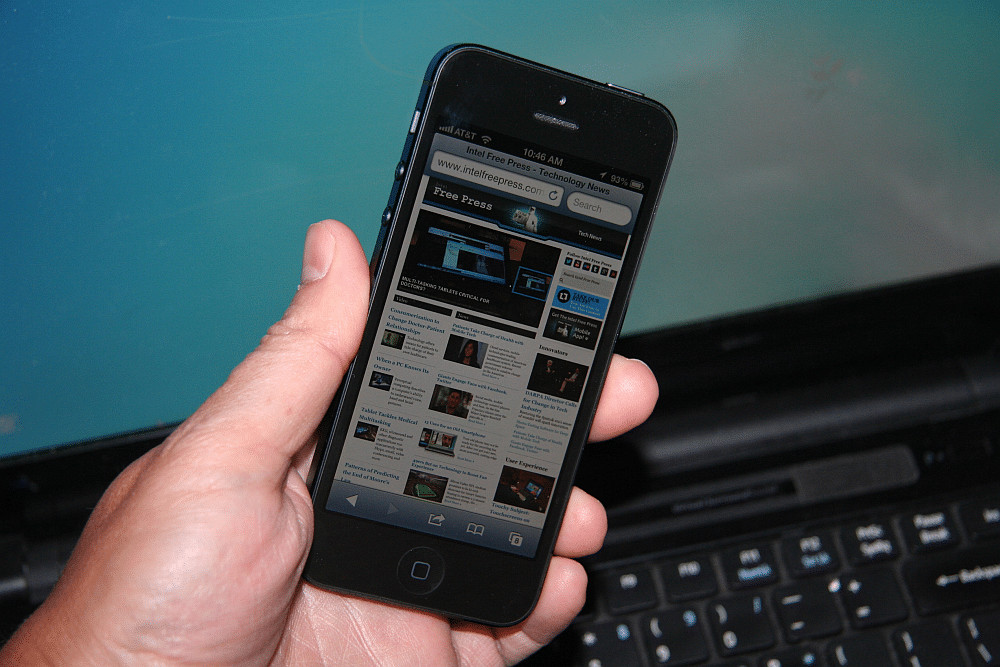Smartphones are now the mobile device of choice for millions of consumers around the globe. IT began back in 2007 when iPhones first came to market, and thusly changed the way that people think about phones forever. They transformed the way people communicate, access the internet, shop and work. Now, smartphones have long ushered in what has become known as a consumerization of IT, meaning that the once corporate issued devices have largely been shoved aside for work purposes, and instead have been replaced by those that employees prefer using, are more familiar with, and in a lot of cases actually own themselves.
This has resulted in many BYOD (bring your own device) policies in workforces around the globe. Your company may already have one in place, or you may be thinking that IT might be more cost efficient if your employees all provided their own smart devices rather than having to fork out for them yourself. In either case, you will need stringent BYOD and MDM (mobile data management) policies in order to fully protect yourself and your customers when IT comes to the sharing and security of sensitive data.
What Does BYOD Mean For Your Business?
iPhones, Android phones and Windows Phones – whatever the preferred smart device of your employees, they have proven to be a highly disruptive force for the enterprise. Firstly, smartphones are no longer simply voice communication devices. They are data devices. And, as data devices, they are much more valuable to a company than what IT says on their price tags.
So let’s start there.
BYOD Saves Money
IT was indeed an inevitable response by a lot of companies to the rapidly changing mobile technology to introduce BYOD policies. Put simply, IT saved a lot of organizations a lot of money. Since employees are buying smartphones anyway, by allowing those workers to use these devices for business purposes negates any need for the company to provide them.
The Risks
However, when you suddenly have a lot of employees bringing their own devices into to work, IT can very quickly begin to create quite a significant headache for IT managers.
The problem of course comes from the fact that these devices aren’t necessarily secured adequately. If the user is perhaps a little careless with their smartphone, then any amount of malware could potentially find its way in, and then the device itself in turn could be used as the jumping point for the whole network to become infected. And what if a worker’s device becomes lost or stolen? Any sensitive data that is stored on there immediately becomes compromised. And what happens when an employee leaves the company? How can you be sure that he or she leaves all important information behind?
BYOD Means Strict Policies
This is where there needs to be some strict policies in place to mitigate these risks. One approach is to manage clients with a central policy engine. For example, Windows Intune can provide insights into configuration updates, can make sure that all devices are up to date and secure, and provide malware protection statuses for users, as well alerts and security policies.
What some companies like to do is integrate these functionalities all within a complete configuration management console, so that they can centrally provision all end-user systems on mobile devices so that they can be kept current with all the latest platform updates.
MDM Solutions
The consumerization of IT has meant that the desktop-dependent lifestyles of employees around the globe have been traded in for the convenience of smartphones and tablets. The slew of security concerns, as outlined above, has given way for an influx of mobile device management (MDM) solutions to offer some sort of relief for companies. Indeed, the need for such solutions has become so great, in fact, that the MDM market is now worth nearly $6.6 billion according to Forrester.
How a lot of these solutions work is by creating a “secure container” on an employee’s device, that hosts and encrypts corporate data independently from personal data. IT administrators can then use the MDM platform that has been put in place to deploy corporate emails or apps to employee’s personal devices and establish specific user access policies for each.
The idea is that, should an employee’s device become lost or stolen, the company can rest assured that all corporate data resides in its own secured space. And, what is more, employees can actually enjoy the benefIT of essentially having two devices in one.
A BYOD policy can save your company a lot of money, and indeed IT is what a lot of employees simply expect in this day and age. However, such strategies do of course come with a large amount of risk, and so they should only be considered if you are capable of putting strict policies in place, and have the capacity to also implement some kind MDM solution to protect yourself.
Contact us at V&C Solutions to find out how we can help you with your BYOD policies and MDM solutions.





